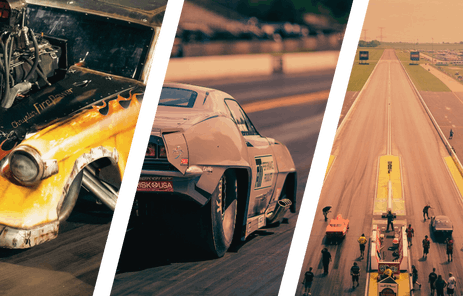A vehicles suspension components are a commonly misunderstood and sometimes forgotten element of the complete performance package — a fact one could attribute to an “out of sight, out of mind” mentality. But the shocks, struts, and other components are vital pieces of the puzzle, whether you’re shredding up the pavement on the dragstrip or whipping around corners. Fortunately, industry experts like the folks at QA1 are quick to offer their knowledge to the masses, better equipping the average car guy or gal with the know-how they need to kick their car into top-performing shape.
 Via their home on Facebook, QA1 offers up regular tech tips that answer some of the most common questions that customers have, or information they feel is most prudent for car folks to know. It’s a great resource, and you don’t have to pay for it, nor pick up the phone to ask. Below are just a few examples:
Via their home on Facebook, QA1 offers up regular tech tips that answer some of the most common questions that customers have, or information they feel is most prudent for car folks to know. It’s a great resource, and you don’t have to pay for it, nor pick up the phone to ask. Below are just a few examples:
Many people wonder if raising the spring seat increases spring rate.
No. Once the weight of the car is set down on the shock and spring combination, raising and lowering the spring seat will only serve to change the shocks eye-to-eye measurement & also the car ride height. The compressed length of the spring at that point will not change unless it has something more than the weight of the car to work against, for instance if the shock is topped or bottomed out.
Is there a difference between shock ride height and chassis ride height?
 Yes. Chassis ride height in racing has to do with class regulations and chassis set up for weight transfer and distribution. In the street world it often comes down to look. Does it have the stance to make it “cool”? Shock ride height is a specified range that is measured from mounting point to mounting point that the shock is designed to work within under normal operating conditions. This measurement is taken or set with the chassis ride set where it needs to be for the specific application. It is designed to allow the shock enough travel in both directions so that the shock will not top or bottom out.
Yes. Chassis ride height in racing has to do with class regulations and chassis set up for weight transfer and distribution. In the street world it often comes down to look. Does it have the stance to make it “cool”? Shock ride height is a specified range that is measured from mounting point to mounting point that the shock is designed to work within under normal operating conditions. This measurement is taken or set with the chassis ride set where it needs to be for the specific application. It is designed to allow the shock enough travel in both directions so that the shock will not top or bottom out.
Ever wonder if you can evaluate a shock by hand, or if a dyno is really required?
It’s impossible to accurately evaluate a shock by testing it only by hand. The shocks perform much differently on a race car when the piston velocity is much quicker than they do when you are evaluating them by hand. It’s important to examine the shocks at low, medium and high piston velocities to have an indication of how the shocks will affect handling. Therefore, a dynometer is necessary for any evaluation.
For more tech tips and information on QA1 and their extensive line of suspensions components for drag race, dirt track, and street vehicles, visit them on Facebook or at their home on the web at qa1.net.
You might also like
Belt vs. Gear Drive Systems For Centrifugal Superchargers: Choosing What Works Best
Centrifugal supercharges can be spun with either a belt or gear drive. We take a look at each method and what applications work best for each.


